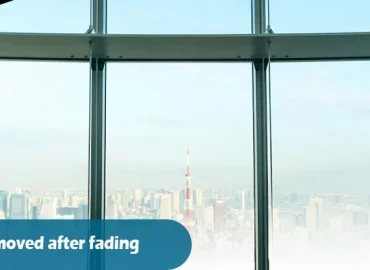Are you considering tinting windows in your home? It can be an attractive way to reduce glare, increase privacy, and even reduce energy costs. But there might also be a concern that tinting will reduce natural light in your home.
We have great news for you: It doesn’t have to be this way. With modern technology, you can have both! You can get the benefits of tinted windows without sacrificing your need for natural light in your home. In this article, we’ll examine what steps you can take to make sure that your window tint doesn’t block out an excessive amount of natural light.
How Window Tinting Works
If you’re looking for a way to keep your home cool and reduce the amount of natural light coming in, window tinting could be the perfect solution. It’s an affordable, easy-to-apply solution that can help you adjust the amount of light entering your home while keeping it secure from intruders.
So how does window tinting work? Basically, tinted windows are coated with a thin film that is designed to reduce the amount of visible light passing through the glass. This film can reduce glare and block out harmful UV rays from the sun. In addition, some films are designed to provide extra security for your home by making windows more resistant to breakage.
Some window films also offer additional benefits. Such as heat reduction and energy savings from blocking out infrared rays from the sun. Overall, car window tinting is a great way to keep your home cool. Reduce natural light entering your home and make it more energy efficient.
The Different Types of Window Tint Available
When it comes to window tint, there are a few options out there. Each with its own pros and cons when it comes to natural light. To help you make the right choice, here’s a rundown of the most common types of window tint available:
Dyed Window Film. A cost-effective option, dyed window film provides privacy by blocking out certain lines of sight while allowing the most amount of natural light in.
Metalized Window Film. Made up of tiny metal particles, metalized window film reflects sunlight away from the home and is great for keeping your home cool during the summer months. It’s worth noting that this type of tint also blocks both UV rays and heat from entering through your windows.
Ceramic Window Film. Ceramic window film offers great coverage against both UV rays and heat without compromising on esthetic value. As this type is virtually transparent from both inside and outside the home. However, it does come with a higher price tag than the other two options.
By considering the different types available. You can decide which window tint best suits your needs without sacrificing on natural light in your home.
How Much Light Is Blocked by Window Tints?
The amount of light blocked by window tints really depends on the type and darkness of the tint. The darker the tint, the more light that it can potentially block out.
But don’t worry you don’t have to sacrifice a lot of your natural light if you’re worried about privacy or energy efficiency. Here are some common types of window tints and how much natural light they let in:
Clear Film
Most clear window films don’t have much color, and they’re almost invisible. Even so, these films still block 99 percent of UV rays and let in 99 percent of natural light.
Dyed films
Dyed films also offer UV protection but vary in how much visible light they allow in depending on their darkness. Most are dark enough that you won’t be able to see through them from outdoors and yet still allow enough natural light into a space for comfortable living and working conditions.
Metalized films
Metalized films are made with metal particles stamped into them. This gives them a higher level of reflectivity than other types of window film – up to 55% reflection. But also a higher level of heat control and view-through capability compared to dyed films. They also allow between 40 and 50 percent visible light transmission, depending on their darkness. So they are an excellent option for controlling glare while still letting natural sunlight into your home or office space.
No matter which type of tinting you choose. You can rest assured that your windows will still let in plenty of natural daylight without compromising privacy or energy efficiency.
Pros of Reduced Light From Window Tinting
When you’re thinking about tinting windows, one of the biggest pros is that it can reduce the natural light coming in. While this may sound like a con, there may be some benefits to a darker room.
Protection from UV Rays
As you probably know, having windows that are tinted can protect your family from the harmful UV rays from the sun. These rays can cause fading in furniture and increase the temperature in your home. Tinting your windows shields your house from these damaging UV rays.
Cost Savings on Energy Bills
Another potential benefit of tinting is that it can help make your home more energy-efficient. Because tinted windows block out more heat, this could make your home cooler during those hot summer days. That would mean you’ll need to cool off with air conditioning less, potentially resulting in lower energy bills over time.
Enhanced Privacy
If privacy is a concern for you, window tints could also help make sure outsiders can’t look right into your home or get a glimpse of your large-screen TV or other expensive items like electronics or jewelry. It’s an investment that could end up saving you money while keeping those valuable items safe and secure inside your home.
Cons of Reduced Natural Light From Window Tinting
When it comes to tinting windows, you should know that you might not get as much natural light in your home as you’d like. While the tinting can provide the privacy and improved climate control you need, it can also reduce the amount of daylight that comes into your home.
Diminished Visibility
Tinting a window can cause it to become darker than usual. This is necessary to block out excess heat, especially during the summer months. But if you want to enjoy a good view of your backyard or a park nearby, this could be problematic.
Glare Reduction
Dark window tinting does reduce glare, but only when heavily applied this means less visibility both from inside and outside the home. The glare reduction also causes a reduction in clarity and color vibrancy, so if having bright colors coming in from the outside is important to you, this isn’t ideal either.
It’s important to note that tinted windows may require extra maintenance as well, either by rolling down the window or removing it and cleaning it thoroughly every few months. That said, if you weigh this against the pros of reduced heating bills and more privacy for your family, then the benefits might just outweigh these costs.
Conclusion
In conclusion, tinting windows can help reduce natural light in your home. This can be beneficial in terms of energy efficiency, heat control, and privacy, but it also can dim the amount of light available. Make sure to do your research ahead of time and to look into energy-efficient window films for the best results. You may also want to consider other options such as blinds and curtains that can be used in combination with window film to adjust the amount of light in your home and to maximize the benefits from the window tinting.



